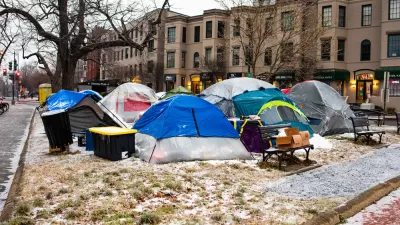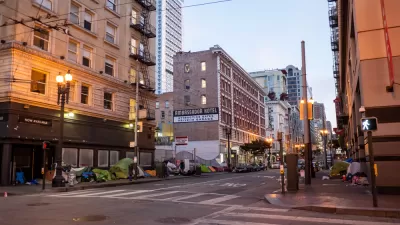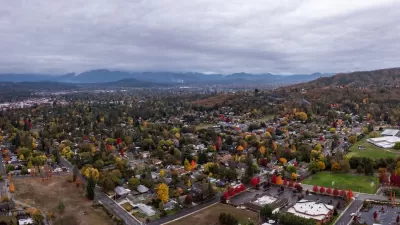During a city council meeting that had to pause while police cleared the room of activists opposing the measure, the council voted to ban public sleeping within 500 feet of schools, making one-fifth of city sidewalks off-limits to unhoused people.

In a move that opposing councilmember Marqueece Harris-Dawson called “an inhumanity that is beneath the citizens of this city,” the Los Angeles city council voted 11-3 to impose stricter regulations on public sleeping. As David Zahniser and Benjamin Oreskes report in the Los Angeles Times, “Under the new restrictions, people would be prohibited from sitting, sleeping, lying or storing property within 500 feet of every public and private school, not just the few dozen selected by the council over the last year.”
Councilmember Mike Bonin, who also voted against the restrictions, “said city leaders should devote their energy instead toward improving programs that aid homeless Angelenos, such as those that help people with housing vouchers secure an apartment.” The new restrictions are supported by Los Angeles Unified School District superintendent Alberto M. Carvalho, as well as groups of parents and school staff.
“Foes of the proposal have repeatedly argued the council’s restrictions would effectively outlaw poverty, leading to the deaths of homeless Angelenos.” Supportive services organizations say displacing people experiencing homelessness will make it harder for people to access services and for outreach staff to establish trust within the community.
Meanwhile, the city is gradually shutting down Project Roomkey, which converted hundreds of hotel rooms into temporary shelter housing during the pandemic.
FULL STORY: L.A. cracks down on homeless encampments near schools, over protesters’ jeers

Trump Administration Could Effectively End Housing Voucher Program
Federal officials are eyeing major cuts to the Section 8 program that helps millions of low-income households pay rent.

Planetizen Federal Action Tracker
A weekly monitor of how Trump’s orders and actions are impacting planners and planning in America.

Ken Jennings Launches Transit Web Series
The Jeopardy champ wants you to ride public transit.

‘Smart Surfaces’ Policy Guide Offers Advice for Building and Maintaining Urban Tree Canopies
Healthy, robust tree canopies can reduce the impacts of extreme heat and improve air quality.

New Jersey Lawsuit Targets Rent-Setting Algorithms
The state of New Jersey is taking legal action against landlords and companies that engage in what the state’s Attorney General alleges is illegal rent fixing.

Washington Legislature Passes Rent Increase Cap
A bill that caps rent increases at 7 percent plus inflation is headed to the governor’s desk.
Urban Design for Planners 1: Software Tools
This six-course series explores essential urban design concepts using open source software and equips planners with the tools they need to participate fully in the urban design process.
Planning for Universal Design
Learn the tools for implementing Universal Design in planning regulations.
Heyer Gruel & Associates PA
Ada County Highway District
Institute for Housing and Urban Development Studies (IHS)
City of Grandview
Harvard GSD Executive Education
Toledo-Lucas County Plan Commissions
Salt Lake City
NYU Wagner Graduate School of Public Service





























